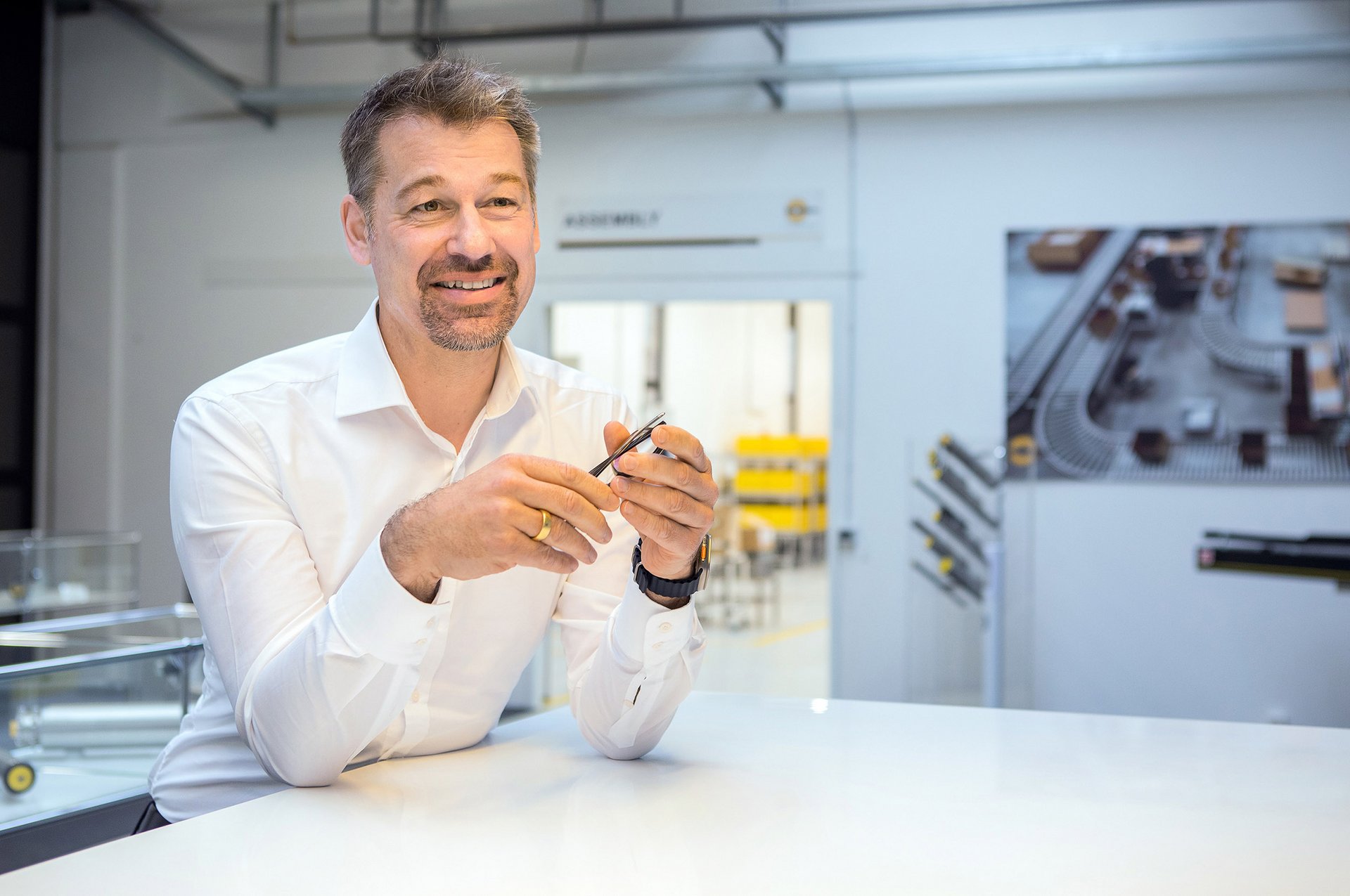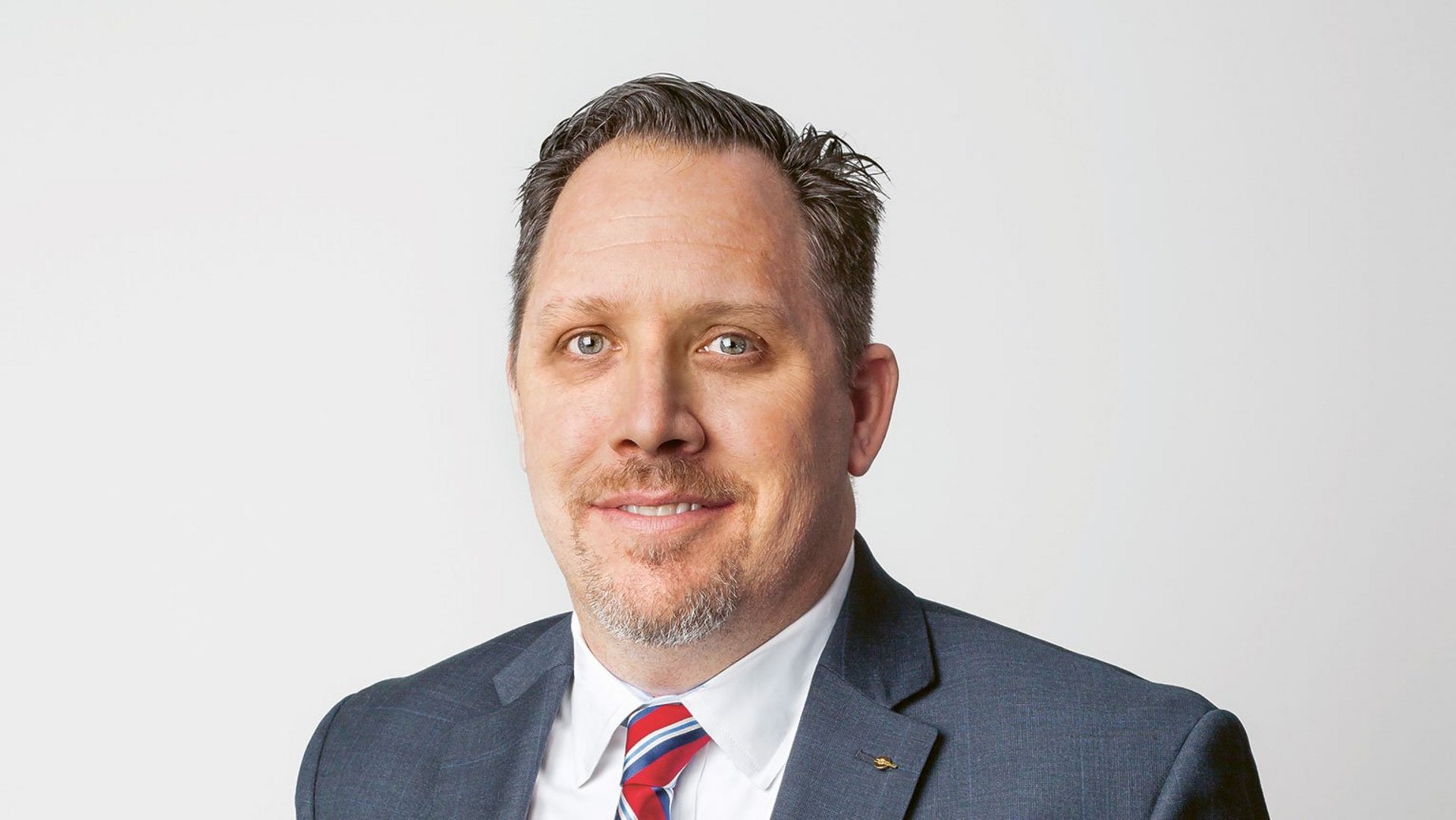“The fundamental market trends are intact”
17.03.2023
Interview as PDF
A conversation with Ingo Steinkrüger, CEO of Interroll, about the 2022 financial year, the importance of resilience and the key trends in the international material-handling industry.

Mr. Steinkrüger, first came the global coronavirus pandemic with disrupted supply chains, followed by the war in Ukraine with subsequent energy crisis and then inflation on the top. How many storms swept over the material-handling landscape last year?
Ingo Steinkrüger: To stay in your meteorological picture: The environment was extremely mercurial in 2022. Our industry, like the economy as a whole, was exposed to a large number of major and sometimes very abrupt changes. For a start, the pandemic created additional, strong demand for material-handling solutions, mainly due to the booming e-commerce business. At the same time supply chains were extremely strained, sometimes making it impossible to fulfill all customer requests quickly and as desired. Then came the sudden war in Ukraine and the subsequent energy price shock as well as renewed coronavirus lockdowns in China. All of this led to uncertainty in the market, put renewed strain on supply chains and threw many companies' initial plans into disarray.
Looking back, how did Interroll manage this volatile year?
We were able to master these unusual challenges over the course of the past year thanks to the professional expertise, high flexibility and huge commitment of our employees. I would like to express my sincere thanks to all of them. Our record sales, coupled with increased profitability, is a success we all can be proud of. I am also very pleased that we were able to support our customers with confidence under these very challenging conditions.
How is the current situation?
The economic climate has stabilized somewhat. But it was important that we were able to quickly reduce our high order backlog during turbulent times with strained supply chains. In our view, the decline in demand relative to the record levels of the previous year is mainly due to market uncertainty in 2022. That said, the markets and our entire industry are currently back on more stable tracks, and we are well positioned to take advantage of the opportunities this normalization presents. Our strategy has always been long-term, explaining why we have a portfolio and production capacity second to none in the market. Today, we can serve our customers in many markets even better and faster than we could in the pre-pandemic period. And being able to deliver as quickly as possible offers decisive added value for our customers, given ever shorter project times. They can take advantage of new business opportunities even better with us thanks to our custometer-oriented on-site sales force that can lead even more complex projects to success with its solution and industry expertise.

For us, it’s important to have a long-term perspective. In that context, we clearly see a growing need for reliable, sustainable solutions that are quick and easy to implement.”
How do you view the immediate future?
The economic outlook for the global economy and the individual regions of the world is very uncertain at present. So a short-term outlook would not be meaningful at present. We are currently focused on remaining resilient and adaptable to be as well equipped as possible for scenarios conceivable in the short term. For us, however, it’s important to have a long-term perspective. In that context, we clearly see a growing need for reliable, sustainable solutions that are quick and easy to implement. And with our product portfolio and associated platform strategy, we are in exactly the right position to meet this need.
How would you describe your business strategy?
We have shown that we can operate successfully in the material-handling industry over the long term. We experienced the difficult times of the internet bubble and of the financial and euro crises - and we learned from them. That’s why we continue to rely on our business model as a neutral partner for systems integrators and original equipment manufacturers, on lean cost structures, on independence from external capital providers and on "breathing" production sites that can adapt seamlessly and cost-effectively to the respective demand situation worldwide. We are also committed to nurturing a form of cooperation typical of medium-sized businesses that is characterized by flat hierarchies and personal responsibility. Our agility and flexibility are correspondingly high. We have demonstrated these attributes, for example, with the rapid establishment of a task force that successfully tackled the supply chain issue last year. Thanks to this work and the experience gained, our supply chain today is significantly more robust through further regionalization and more comprehensive redundancy.
Have market trends in your industry changed significantly due to the rapid succession of external crisis factors?
No. Personal discussions with our customers and corresponding surveys show that the market trends we rely on in the long term are intact. The topic of energy efficiency, in which we have been the technological leader in the material-handling market for years, has become even more important not only for reasons of sustainability but also because of soaring energy costs, especially in Europe. Take, for example, the RollerDrive, our low-voltage drives, which in combination with the Modular Conveyor Platform (MCP) have practically become the industry standard for a controlled flow of goods since their market launch. This decentralized drive concept enables savings of around 50 percent compared with conventional solutions. Or consider the near 90 percent efficiency of our compact drum motors. Or the particularly durable and energy-saving drive concept of our sorting solutions. It helps us that system integrators and users today are concerned about energy consumption and the sustainability of material-handling solutions and will remain so in the future. This applies both to investments in new plants and to modernization projects.
But sustainability is not just a question that concerns customers and users.
Exactly. That's why for 2022, after reporting on our sustainability measures in the annual report in previous years, we published a separate sustainability report for the first time, based on international GRI standards and promoted by the Board of Directors and the Group Management. We are committed to it. We have set ourselves binding and concrete targets that we aim to achieve by 2030. To this end, we have defined policies, guidelines and targets for various fields of action in which we can have the greatest impact through appropriate measures. We have placed these under the strategic and substantive responsibility of individual members of the Group Management, who work together with local management to achieve the corresponding targets. This approach not only ensures an effective decision-making process, but also makes it easy to identify best practices that increase the effectiveness of the measures. We focus on measures whose impact we can actually prove.
What trends do you see in distribution?
Market figures and forecasts show that not only the variety of goods shipped, but also the volume of shipments will continue to rise sharply worldwide. The volume of annual parcel shipments is expected to grow to around 256 billion by 2027, with an average annual growth of 8.5 percent from 2022. The growing flow of goods can only be managed with automated and highly flexible material-handling systems – even in emerging markets where there is still no shortage of skilled workers and manual workflows are more common. At the same time, distribution networks in developed markets are increasingly undergoing a transformation towards decentralization, giving rise to new distribution centers that are closer to customers and enable courier, express and parcel (CEP) service providers to achieve higher capacity, faster deliveries and greater sustainability in the logistics process.
How are you positioned in this important market segment?
In the CEP market, we have a strong market position in sorting solutions, which we have been continuously expanding for years. More than 500 sorters are already being used worldwide by industry leaders such as Amazon, DHL, FedEx and UPS as well as most postal companies. In recent years, we have consistently expanded our platform-based portfolio of sorting solutions through innovations. For example, we will soon unveil our new High Performance Conveyor Platform (HPP), which meets the special belt conveyor requirements of the CEP market for robustness and throughput. The advantages of a flexible modular system of freely combinable modules with a corresponding range of services will be available for the first time in this area - for automated conveying and sorting applications in large and small distribution centers, for new installations and also for retrofitting.
So you’ll remain focused on innovation even in uncertain times?
Absolutely. We have no alternative if we aim to expand our position and fulfill our responsibility to our customers. For years, our platform strategy has paved the way to further innovation. Like the well-known Lego system, it enables user- and industry-specific solutions to be built for customers around the world, using quality components based on tried and tested components. This strategy also helps us not only significantly reduce the complexity of our production, but also advance our product development and expansion step-by-step and in a targeted manner by adapting existing components, combining them in new ways or adding individual elements in a targeted way. Incidentally, we follow this principle not only in the hardware area, but also with our global Center of Excellence in software and electronics. In this way, we are able to continuously deepen and broaden the added value of our product portfolio in both hardware and machine communication.
Does this path of innovation also apply to day-to-day collaboration with customers?
Yes, it applies to all processes and, like our entire innovation strategy, is geared to actual added value for customers, such as the benefits offered by quality, speed and tangible simplicity. For instance, we are constantly expanding the range of functions of the Interroll Layouter, which allows customers to drastically reduce their planning effort by easily creating 3D simulations of planned systems. Another example is our well accepted webshop that allows customers to place orders quickly and conveniently online.
We also actively involve our customers in innovation projects. As part of our Rolling On Interroll program, for example, we are in constant contact with our customers. At the same time, we are developing new forms of cooperation in which the strengths of the involved parties are bundled for the benefit of users. We support ground-breaking partnerships, such as the one with the systems integrator viastore, that focus on the respective core competencies of the involved parties and lead to genuine win-win constellations that advance our industry as a whole.
